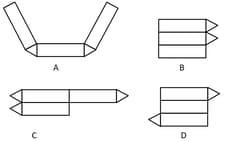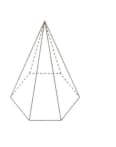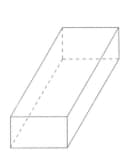Identify the shapes of two-dimensional cross-sections of three-dimensional objects, and identify three-dimensional objects generated by rotations of two dimensional objects
Identify the shapes of two-dimensional cross-sections of three-dimensional objects, and identify three-dimensional objects generated by rotations of two dimensional objects: Overview
This topic covers various concepts like Shape of Surface of a Prism, , etc.
Important Questions on Identify the shapes of two-dimensional cross-sections of three-dimensional objects, and identify three-dimensional objects generated by rotations of two dimensional objects
Write the number of vertices in square prism?
Write the number of edges in square prism?
How many faces are there in rectangular prism?
What are the similarities and differences between prisms and pyramids?
All the sides of a 5 cm cube are painted. How many cm cubes can be cut out from it? How many of these cubes will have no painted sides?
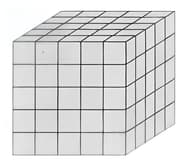
All the sides of a cm cube are painted. How many cm cubes can be cut out from it? How many of these cubes will have one painted sides?

All the sides of a cm cube are painted. How many cm cubes can be cut out from it? How many of these cubes will have two painted sides?

All the sides of a 5 cm cube are painted. How many 1 cm cubes can be cut out from it? How many of these cubes will have three painted sides?

The figure given is folded to form a box. Choose the cubes that are similar to the cube formed:
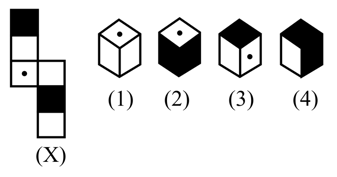
Draw a cuboid with its dimension as seen from top, side and front views.
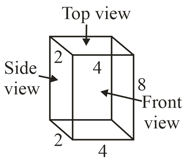
Is it possible to create a polyhedron with faces, vertices and edges? Justify.
To which of the given solids is Euler's formula applicable?
The total surface area of cube 'A' is more than its curved surface area. If each edge of cube 'B' is more than that of cube 'A', then find the sum of the curved surface area and the total surface area of cube 'B'
Kavya arranged pencil boxes in block as shown below. She used too loops of ribbon to hold them together. Each loop of the riboon goes around four sides of the block.
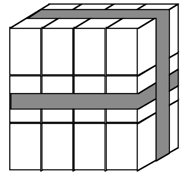
How many pencil boxes got the riboon touch exactly two faces?
Aasha makes sweets of various shapes. She packs the sweets in a cardboard boxes. Before folding into boxes, she pastes some shapes on the flaps as shown below.
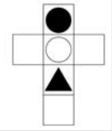
Which of these is the boxes could be made by folding the flaps of the cardboard above?
Shown below is the net of a cube.
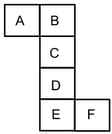
Which of these sides will be opposite to face once it is folded into a cube?
Shown below is a solid figure.
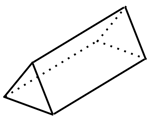
Which of these could be folded to make a shape like the figure above?
